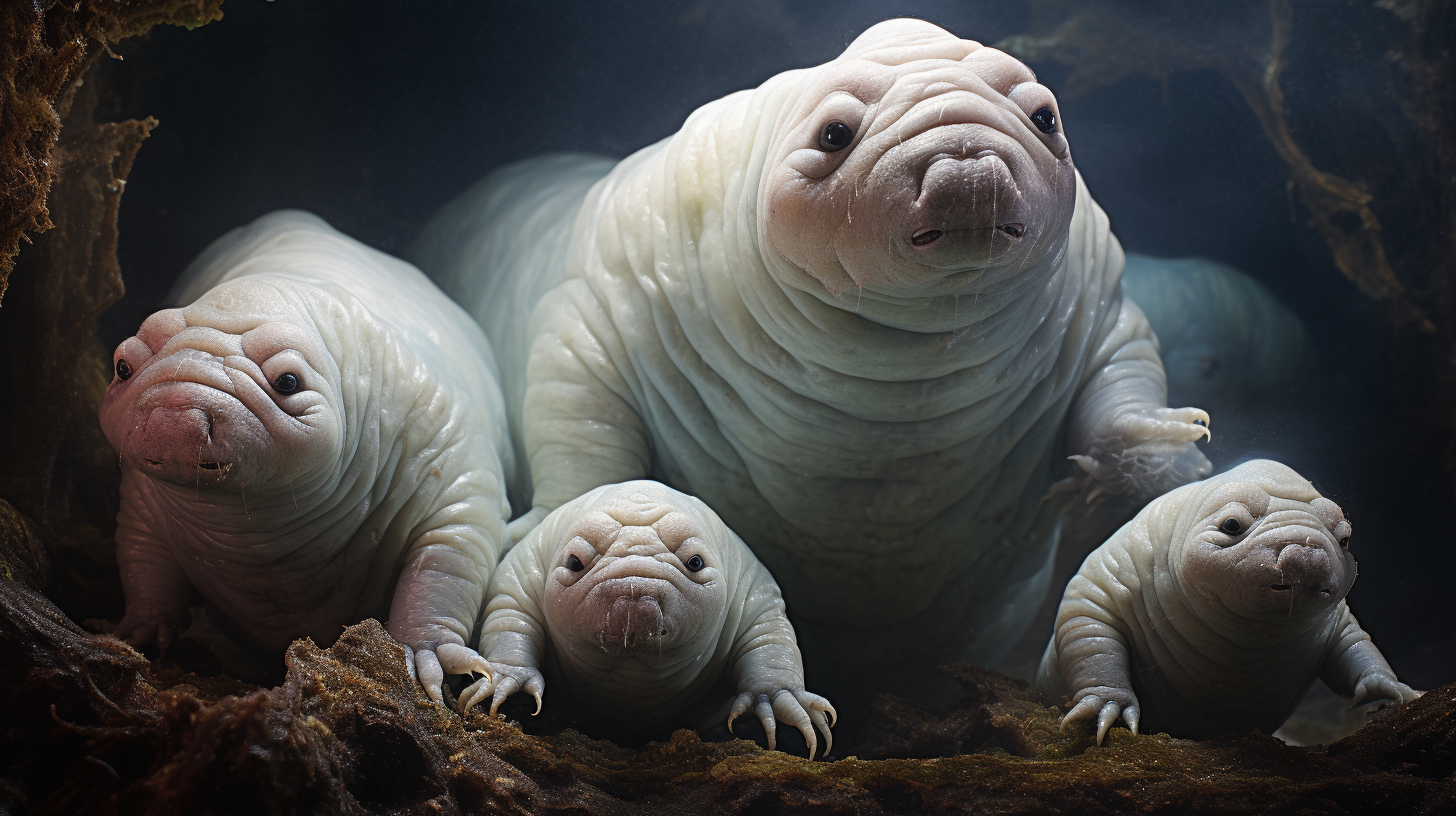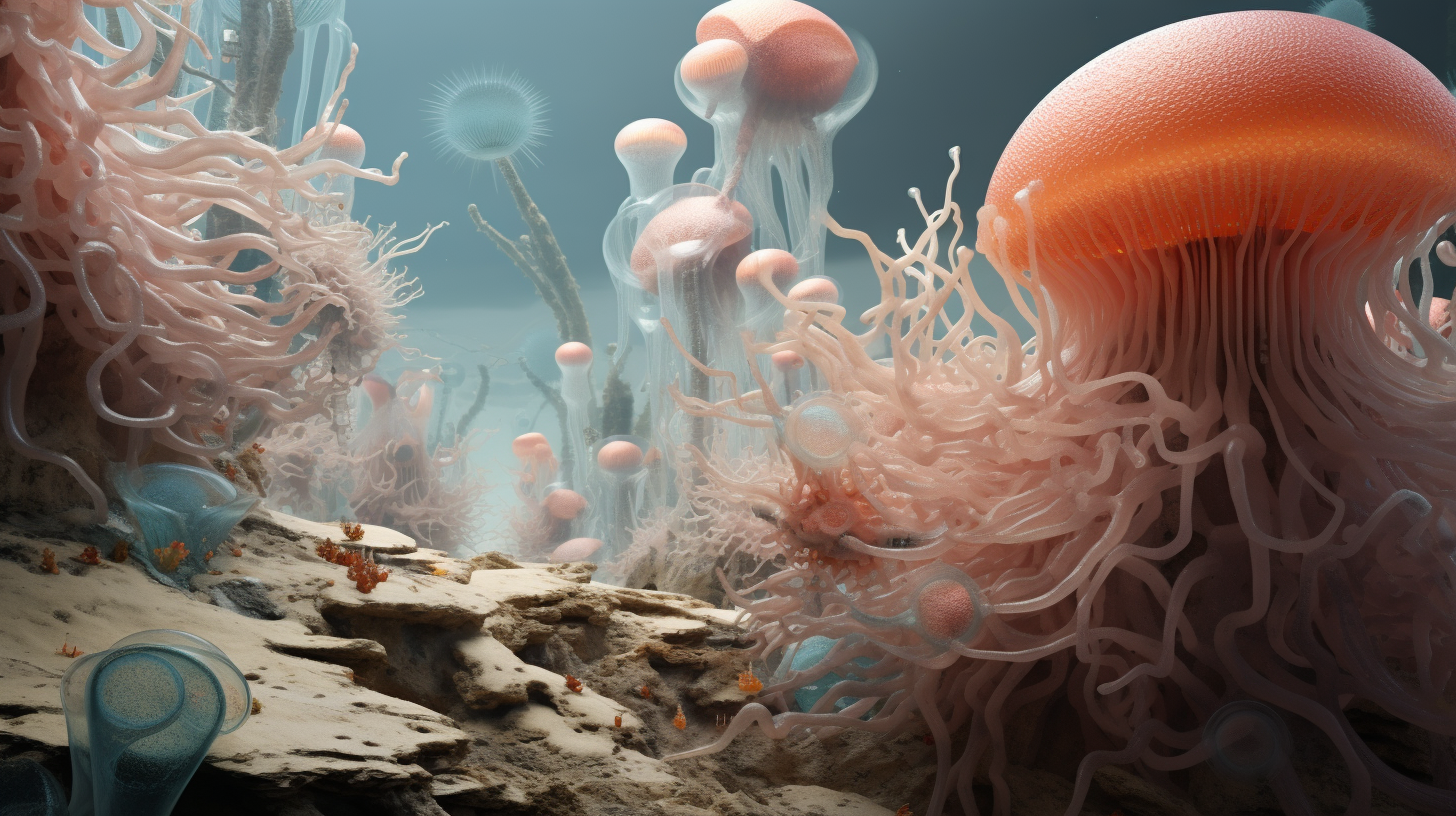Alien Extremophiles & ET Life
Alien extremophiles are theoretical life forms hypothesized to thrive in extreme extraterrestrial environments. These organisms, resembling Earth’s extremophiles, could exhibit unique adaptations such as thermal resistance, chemical durability, and radiation protection, indicating life’s potential to exist in harsh conditions across the universe.
- What is their significance in astrobiology, and the implications they hold for the search for and theories of extraterrestrial life. We’ll uncover what these resilient creatures can tell us about survival in the cosmos, and why they’ve become the focal point of interplanetary research.
- What are alien extremophiles, and why are they key to understanding life beyond Earth?
- How do theories about alien extremophiles challenge our traditional concepts of life and survival?
Join us as we journey into the realm of the extremophiles, where life defies expectations and expands the boundaries of what we consider possible.
What Are Alien Extremophiles?
Definition of Extremophiles
At their core, extremophiles are organisms that don’t just endure, but actually thrive in conditions that would be lethal for most other forms of life on Earth. These hardy microorganisms have captivated our imagination, raising the possibility of life existing in the seemingly inhospitable corners of the universe. By analyzing their survival mechanisms, we’re starting to unlock the secrets of resilience in the face of extreme environmental stressors—a testament to life’s tenacity.
Within the realm of astrobiology, alien extremophiles are hypothesized entities that would exist on other planets or moons, where extreme conditions are the norms. They’re not simply Earth-based extremophiles transplanted to alien worlds; rather, they’re theoretical examples of what life could look like when it evolves entirely outside our planet’s mild climate and familiarity. These beings would likely have developed unique biochemical processes to make a living out of their harsh surroundings.
Types of Extremophiles
We classify extremophiles based on the specific extreme environments they can withstand. The types are diverse, as are the environments they’ve adapted to. Some of the key categories include:
- Thermophiles: These organisms flourish at high temperatures, often found near hydrothermal vents or in hot springs. They can tolerate heat that would denature the proteins of most other life forms. – Psychrophiles: At the opposite end of the temperature spectrum, these extremophiles thrive in frigid temperatures that would typically freeze cellular activity.
- Halophiles: Salty environments are where halophiles come to life, and they’re specially adapted to high salt concentrations.
- Acidophiles: Living in highly acidic conditions, these extremophiles survive environments that could dissolve metals and other organic materials.
- Alkaliphiles: Alkaline environments with high pH levels are home to these extremophiles, which have evolved mechanisms to maintain stability in such settings.
- Radiophiles: Perhaps amongst the most mind-bending, these extremophiles can withstand radiation doses that would be fatal to most known organisms.
- Barophiles or Piezophiles: These are extremophiles that live under extreme pressure, which can be found in the deepest parts of the ocean.
Each type highlights the versatility and adaptability of life. These extremophiles challenge our understanding of biology and redefine the limits within which life can exist. As we investigate deeper into the study of these remarkable organisms, we realize that their counterparts on other worlds—if they exist—could possess even more astonishing adaptations. This realization broadens our search for life beyond Earth, suggesting that we may need to look in places we once considered too hostile.
Characteristics of Alien Extremophiles
Adaptation to Extreme Environments
In considering the resilience of extremophiles, we’re fascinated by how these organisms have evolved to not just survive, but thrive in conditions that would be fatal to most life forms. Alien extremophiles, which hypothetically exist on other planets or moons, must possess extraordinary adaptations to cope with their unique environments. Some anticipated adaptations include:
- Thermal resistance: The ability to withstand both intense heat and extreme cold.
- Chemical durability: Tolerance to high levels of toxic substances or the ability to metabolize elements that are poisonous to terrestrial life.
- Radiation protection: Mechanisms to repair or prevent damage caused by high levels of radiation.
- Osmotic pressure regulation: The ability to maintain cellular integrity in very high or low-pressure systems.
- Desiccation resilience: Survival strategies for living with minimal or no water.
These adaptations point to the incredible plasticity of life, giving us clues about what to look for in the quest for extraterrestrial organisms.
Survival Strategies
When delving into survival strategies, we uncover a suite of tactics that alien extremophiles might employ to persist in harsh environments. They may include:
- Cryptobiosis: Entering a state almost like suspended animation to endure unfavorable conditions until they improve.
- Efficient resource utilization: Using available resources sparingly to maximize energy conservation.
- Symbiotic relationships: Cooperating with other organisms to enhance survival capabilities.
- Biochemical versatility: Evolving metabolic pathways that enable the organism to use a variety of chemical energy sources.
- Genetic adaptability: Rapid mutation rates that increase the chances of evolving traits suited to extreme conditions.
This breadth of strategies demonstrates life’s potential to carve niches in seemingly inhospitable places, expanding the horizons of our search for life in the universe.
Examples of Alien Extremophiles
As we investigate deeper into the study of extremophiles, it’s apparent that these extraordinary organisms offer a glimpse into the resilience of life itself. Here, we’ll showcase some of the most remarkable examples.
Tardigrades – The Water Bears
Tardigrades, affectionately known as water bears, are microscopic creatures renowned for their survival skills:
- Withstand temperatures from just above absolute zero up to 300 degrees Fahrenheit
- Endure pressures six times greater than those found in the deepest ocean trenches
- Survive radiation levels that would be lethal to most life forms
- Remain in a dehydrated state for decades and rehydrate with available water
These capabilities make tardigrades one of the most versatile extremophiles known to us, and they often stand as the quintessential model for alien extremophiles in astrobiological research.

Deinococcus radiodurans – The Bacterium That Survives Radiation
Deinococcus radiodurans is another extremophile that pushes the limits of our understanding:
- Resists doses of ionizing radiation thousands of times higher than fatal levels for humans
- Possesses an extraordinary ability to repair its DNA, which explains its resilience to radiation and desiccation
- Often nicknamed Conan the Bacterium, showcasing its robust nature
Studying Deinococcus radiodurans not only informs us about survival in extreme conditions but also has practical implications in nuclear waste bioremediation.
Methanogens – Survivors in Extreme Environments
Methanogens are a group of extremophiles that thrive in environments devoid of oxygen:
- Produce methane as a byproduct of their metabolism, which plays a significant role in Earth’s carbon cycle
- Found in diverse and inhospitable environments such as hydrothermal vents, deep within the Earth’s crust, and even in the digestive tracts of ruminants
- Generate energy by reducing carbon dioxide with hydrogen, which enables them to exist in environments where other organisms would perish
The study of methanogens expands the possibilities for types of energy systems that could support life in extraterrestrial settings.
Importance of Studying Alien Extremophiles
Insights into Life on Other Planets
Studying alien extremophiles offers us invaluable clues about the possibility of life beyond Earth. By understanding how these organisms thrive in extreme conditions, we can better predict where to look for life on other planets.
- Tardigrades show us that life can exist in highly variable and extreme temperatures.
- The resilience of Deinococcus radiodurans to radiation suggests that environments with high radiation levels, such as Mars, could harbor life.
- Methanogens play a significant role in our quest to discover life forms on planets with atmospheres rich in methane, like Saturn’s moon Titan.
Each extremophile’s unique adaptations challenge our assumptions about the necessities for life and expand the scope of habitable conditions.
Applications in Biotechnology
The study of alien extremophiles also has practical implications for biotechnology. The unique enzymes and biomolecules found within these organisms have properties that can be harnessed for human benefit.
- Extremophile enzymes are used in PCR (Polymerase Chain Reaction) technologies, allowing us to replicate DNA at high temperatures. – Proteins derived from extremophiles are employed in the production of biofuels, offering sustainable energy alternatives.
- Certain extremophiles possess antimicrobial properties, leading to the development of new antibiotics.
As we continue to investigate deeper into the molecular biology of these organisms, our potential to innovate in fields such as medicine, energy, and environmental science grows. It’s not just about the search for life—it’s also about improving our own.
End Note
We’ve seen how alien extremophiles revolutionize our quest for extraterrestrial life and enhance our scientific endeavors on Earth. These remarkable organisms redefine resilience, pushing the boundaries of what we consider life-sustaining environments. Their study not only propels us closer to answering age-old questions about our universe but also equips us with innovative tools to tackle modern challenges. As we continue to unlock the secrets of extremophiles, we’re reminded of the vast potential that lies in the unexplored corners of our cosmos—and right here under our microscopes.





